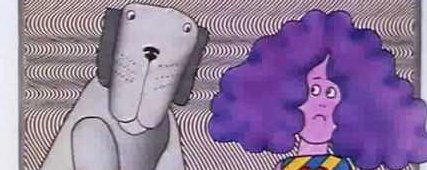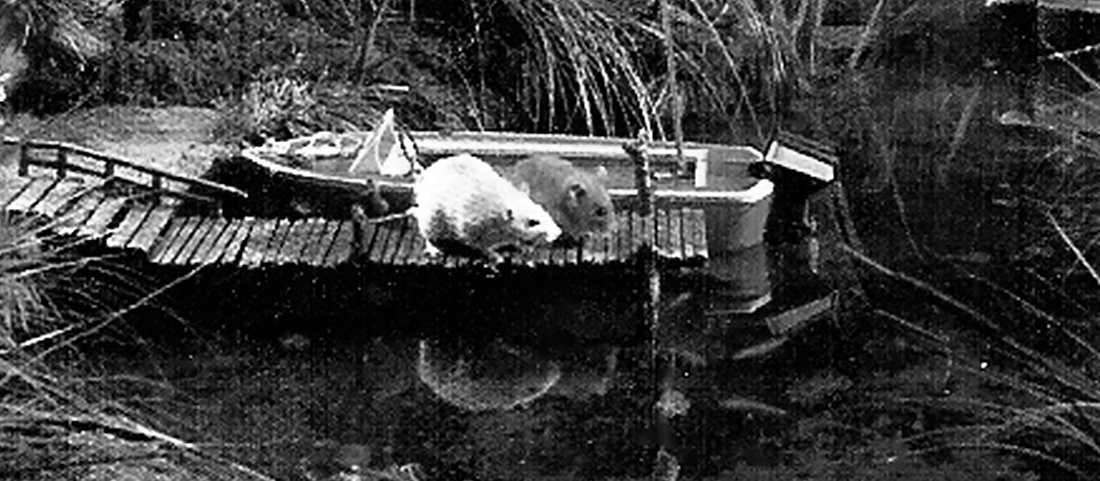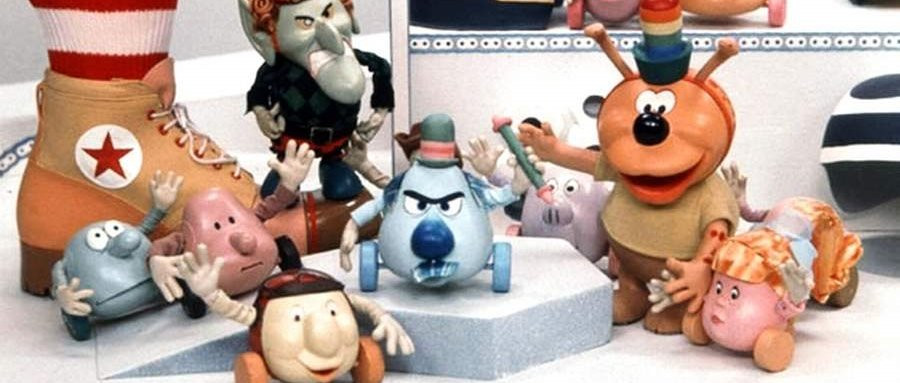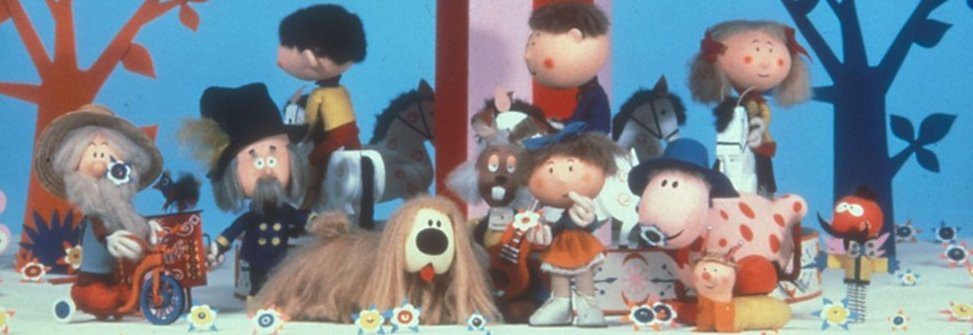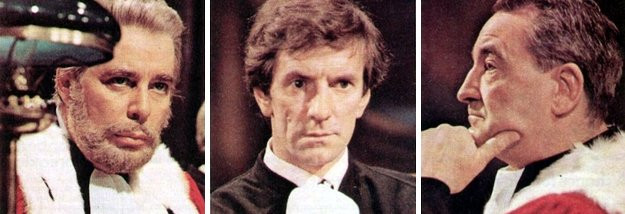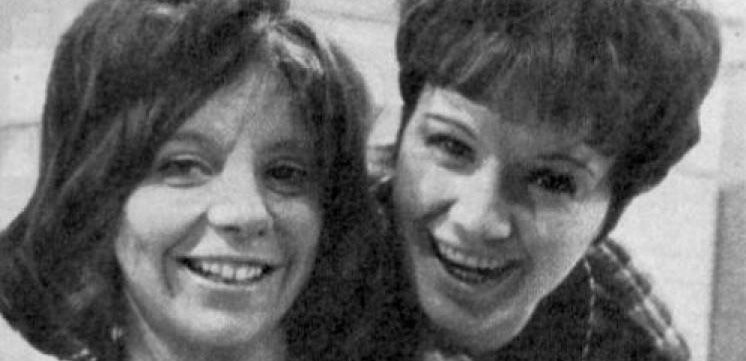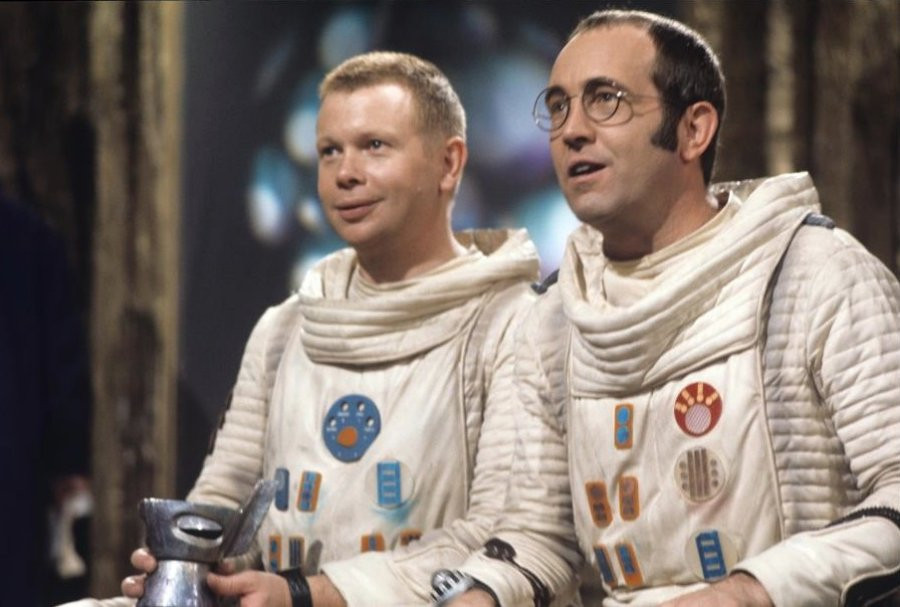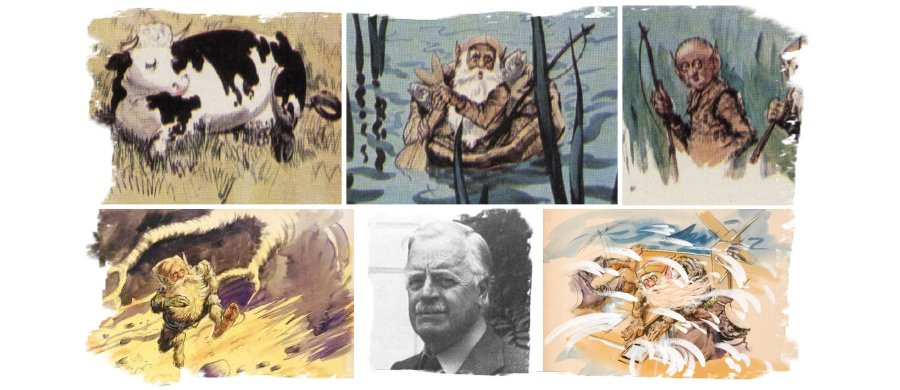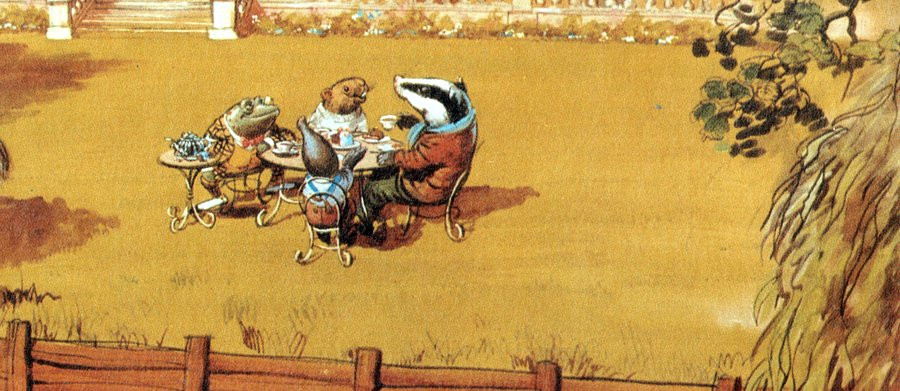
The Wind in the Willows
1970 - United KingdomIn 1970, Anglia Television's Head of Features, Paul Honeyman, took a leaf out of the example of the popular BBC story-read children's programme Jackanory, by commissioning a series based on Kenneth Grahame's enduring classic, The Wind in the Willows. A beautifully written work that had enthralled children for generations, with its evocative descriptions of the countryside interspersed with exciting adventures, the tales of Mole, Rat, Toad and Badger is rightfully regarded as a classic example of English children's literature.
Where Jackanory's format relied on a well-known performer narrating the story direct to camera, Honeyman opted for a different format. A chance meeting with John Worsely, a noted portrait artist whose sitters included Field Marshal Montgomery, Edward Heath and Virginia McKenna, produced the formula for an adaptation of Grahame's classic.
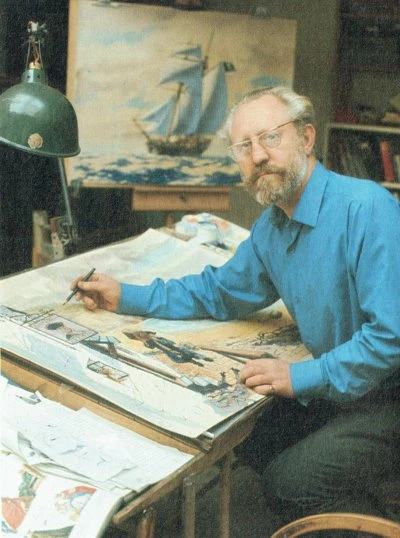
Working in his London studio, Worsley produced 700 wash illustrations to illustrate the series. Often starting work in his Putney flat at 4am to complete them, the paintings were then filmed from a rostrum camera. Honeyman himself added the accompanying narration.
Beyond his fictional work John Worsley most famously created Albert RN, the dummy sailor at the centre of a daring escape from a POW camp during the Second World War. Worsley, who was a prisoner himself, created a life-sized figure out of wire and papier-mâché, which was held between two soldiers during the camp roll call, fooling the guards into thinking they had a full complement of prisoners, while a British soldier made his escape. In 1970, Worsley told TV Times writer Arthur Pottersman how this came about. Having had his paintings displayed at the National Gallery and done three years patrol and convoy work in the Royal Navy Volunteer Reserve, he was made an official war artist and transferred to the Mediterranean. "I was told to get amongst it, to go out and put my head in the lion's mouth, which I did once too often." Behind enemy lines on his second trip, he was captured and sent to Marlag navy P.O.W. camp near Bremen. Not being in uniform, his captors were convinced that Wosley was a spy, which in some ways he was. It took him two months to convince them that he was not.
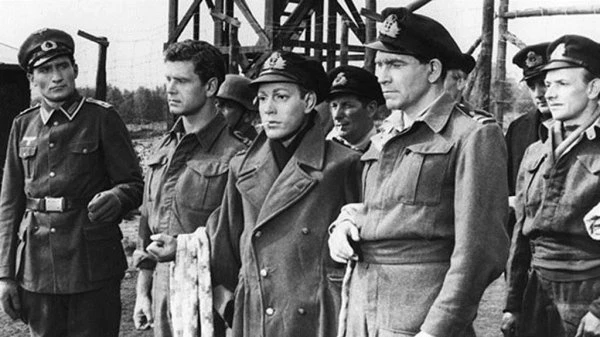
When the P.O.W.'s came up with an elaborate plan to escape, it was Worsley's artistry they turned to. Once a week the prisoners, in groups of 40, were marched out of the camp, 200 yards up a hill to a bath house. The prisoners were counted before leaving and again on returning. Worsley produced a head from German newspapers pulped with water, moulded round a sock full of sand and given an oil paint complexion; ping-pong balls were used for the eyes within a pendulum contraption inside the head to make them blink. Real hair was used to cover the top of his head and to give him eyebrows. The head was then mounted on a wire frame which was covered by a uniform. Albert, as the prisoners named the dummy, was carried up the hill in pieces and assembled in the showers. The escapee then hid in the showers whilst Albert was "marched" back. "We banked on the fact that the German guard never looked at our feet, just heads. We marched in threes, with Albert sandwiched and dangling between us."
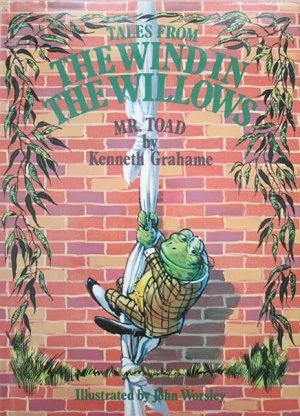
After the war, Worsley remained under Naval engagement, painting portraits of high-ranking officers for the Admiralty, before securing a commission for the popular children's weekly, Eagle, and its companion paper, Girl, achieving his greatest success with The Adventures of P.C. 49, a comic strip about a British police constable. The Wind in the Willows was his first television commission.
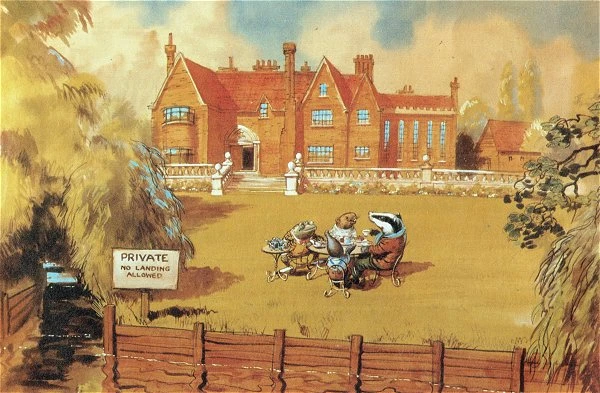
Talking of his illustrations for the series, Worsley explained how he first gauged each character's inner feelings: "Ratty is an extrovert, tough sort of chap, living on the river. Obviously his forebears were sailors, and I've included the portrait of a postcaptain of a rat from Trafalgar time as one of his ancestors. Mole is a little stupid, rather dumb you would expect – he lives underground. He's a bit soft really, open-mouthed with wonder at everything. Badger is a rough, tough country gentleman who takes no nonsense from anybody. Toad is over-rich and pompous."
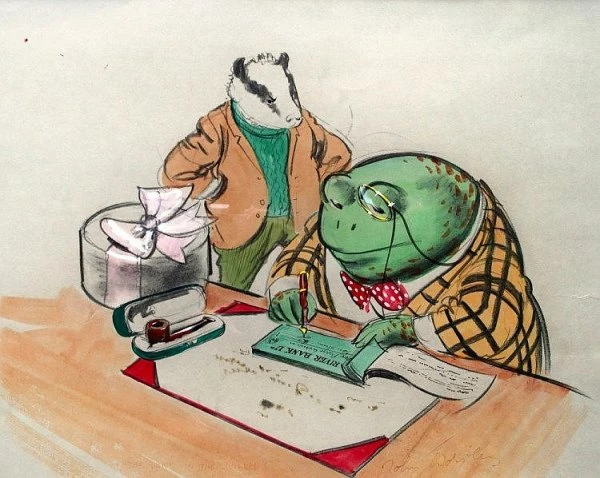
As for the animal's surroundings, well, Worsley was more than familiar with those, too. He loved the river and was a boating enthusiast - readily admitting, at the age of fifty-one, to having a lot of the small boy left in him: "I'm so much the child, I know what children want. When you think of things that tickle us, it seems that we're basically small children."
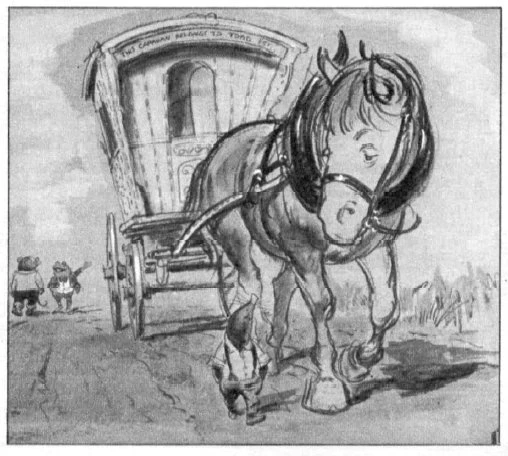
The series was an instant success and Honeyman and Worsley followed it with The Winter of Enchantment, Treasure Island and Baldmoney, Sneezeworth, Dodder and Cloudberry. Their last series together was The Whisper of the Glocken, but sadly Honeyman passed away on 3 October 2000 before it was completed. By that time he had produced some 2,000 paintings.
Published on January 23rd, 2021. Written by Malcolm Alexander for Television Heaven.


